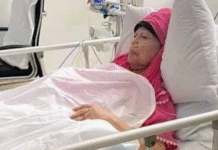
ROSC II, effective since January 30 this year, is being implemented in the upazilas with high poverty and low enrollment and completion rates to provide primary education opportunities to the poorer children—an important step toward achieving the millennium development goal in primary education, said a press release of the World Bank.
The release said that these children mostly girls are aged 8-14, who had missed out schooling at the right age or had been forced to drop out, mainly because of poverty.
The project will help these children complete primary education and move on to secondary education.
The release also said that the ROSC II is built on the success of the first ROSC project that provided a second chance for primary education to nearly 780,000 poor children in 23,000 ROSC Learning Centres, also known as Ananda Schools, in 90 low-income upazillas.
ROSC II will continue to support students in currently operational Ananda Schools established in 2010 and 2011 to enable students to complete grade 5; and scale up the operation in another 100 new upazilas.
The project will also pilot similar initiatives in selected urban slums and for domestic workers, and a pre-vocational skills training scheme for older ROSC students.
A major emphasis of ROSC II is to enhance the quality of education provision to disadvantaged children through increased attention to teacher development, teaching-learning support and an elaborate system of monitoring these activities in the remote and disadvantaged areas through the use of information and communication technologies.
The project also attempts to empower the rural disadvantaged communities to establish, own and manage their Ananda Schools with support from the Government and the local education NGOs.
Ananda Schools blend provision of formal education with non-formal mode of provision with support from NGOs, an area where Bangladesh has drawn international acclaim for its excellence.









